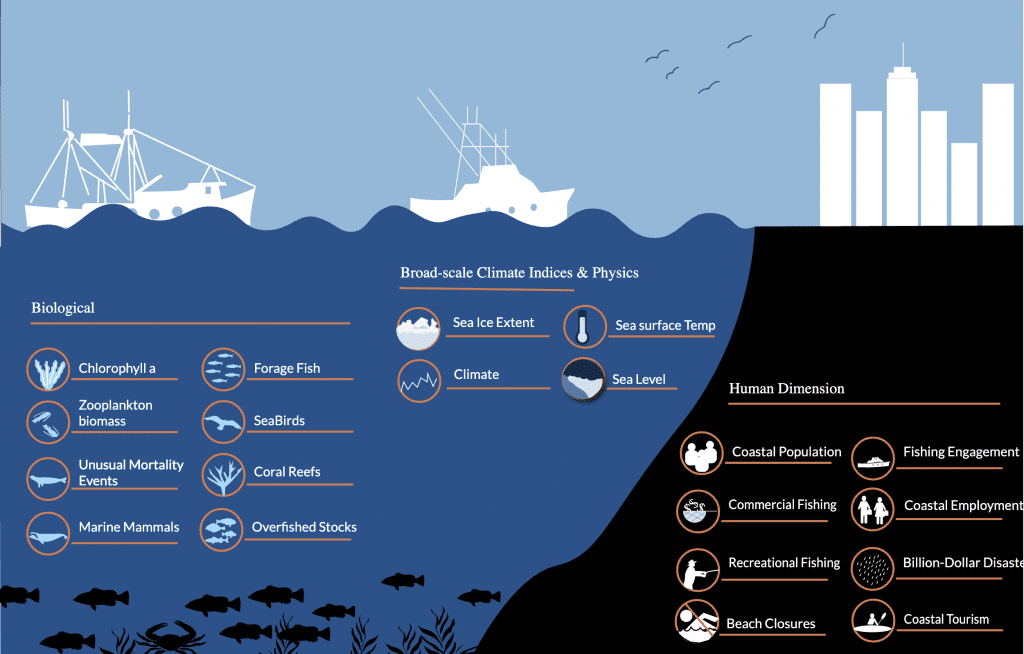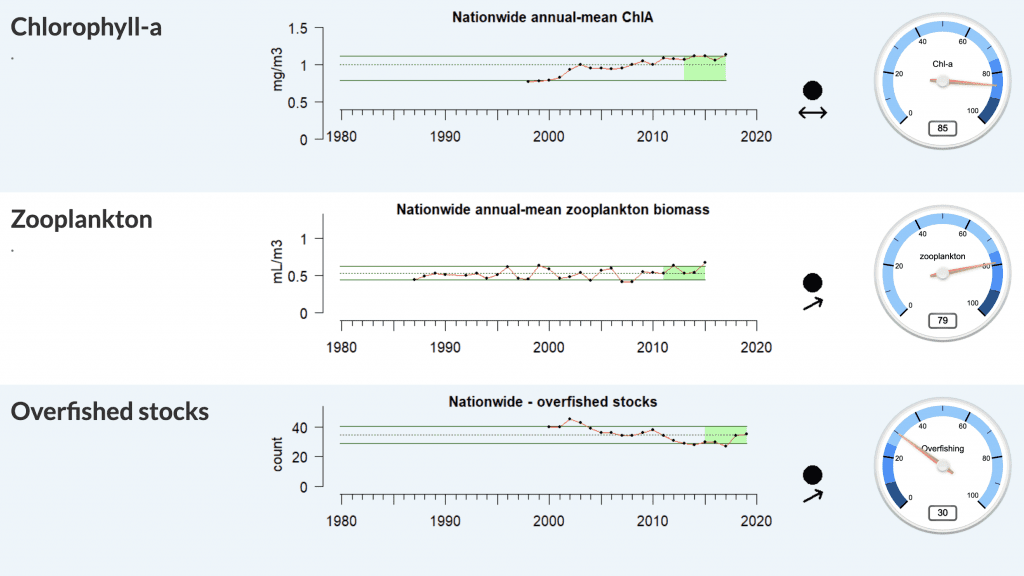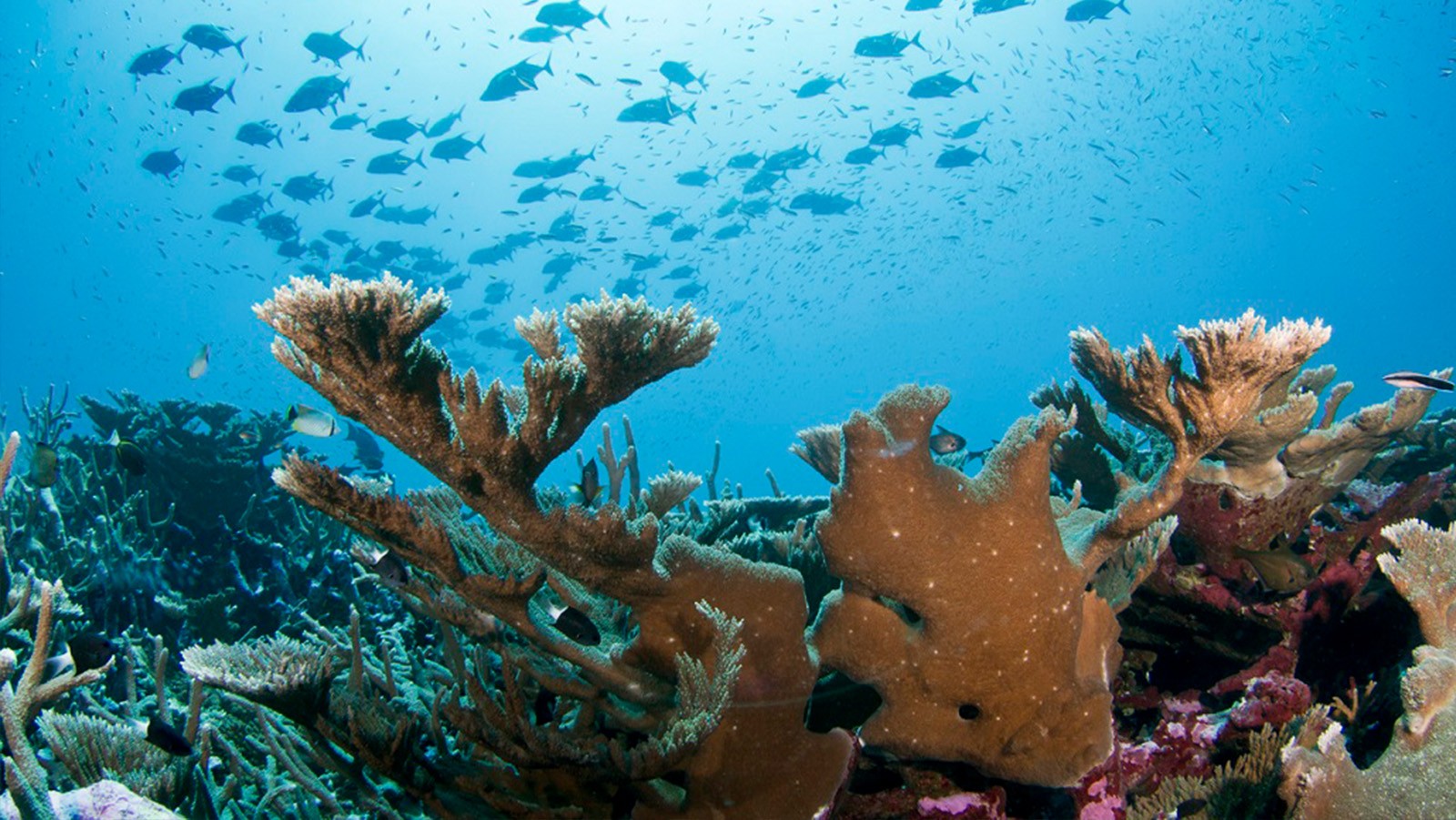NOAA launched a new National Marine Ecosystem Status web tool, on Monday October 19. This tool shows the status of marine ecosystems across the U.S. It provides easy access to NOAA’s wide range of essential coastal and marine ecosystem data in one location for the first time.
Scientists at AOML contributed to this effort. Chris Kelble, PhD, a supervisory research oceanographer at AOML participated as a member of the Ecosystem Indicators’ working group of the NOAA research council. This working group reviewed indicators of marine ecosystem condition collected, and reported on by NOAA and its partners, to select a standardized suite of indicators to assess the condition and trends of all U.S. marine ecosystems.
“The standardized indicators had to span the range of ecosystem components from the climate to the physical and chemical environment to biological components to human dimensions for it to be a comprehensive assessment of the ecosystem condition,” said Kelble.
This new web tool provides the condition and trends of these major marine ecosystem indicators to assess status and trends at the national level and within seven ecosystem regions: Alaska, Hawaii-Pacific Islands, California Current, Gulf of Mexico, Caribbean, Southeast U.S., and Northeast U.S.
“Prior to this effort there were a multitude of ecosystem indicators spread across hundreds of websites that assessed marine ecosystem status in the U.S.,” Kelble said. “Now for the first time at NOAA we have a single website that assesses ecosystem condition from physics to whales using standard indicators and data sources across U.S. marine ecosystems and at the national level.”
Marine ecosystems provide food, jobs, security, well-being, and other services to millions of people across the U.S. There are hundreds of thousands of ocean-dependent businesses employing millions of people and paying over $100 billion in wages annually. Yet, marine ecosystems and the people who rely on them are facing increasingly complex challenges.
“Marine ecosystems are facing challenges as we are more dependent on a greater diversity of marine resources and as the population that lives on our coasts continues to increase,” Kelble said. “This means we need to be better able to understand not just the condition of the ecosystem, but also of the human dimensions that are affected by the ecosystem condition.”
The National Marine Ecosystem Status website will provide the interested public, educators, outreach specialists, natural resource managers, and others a starting point to explore the status of these seven marine ecosystems and the nation at-a-glance. It also provides access to all NOAA websites with ecosystem data on specific themes for more technical audiences.

NOAA collects, analyzes, models, and produces extensive data, information, and decision-support products related to the state of marine, coastal, and aquatic ecosystems, their biota, and the human communities that depend upon them.
This web tool highlights various key indicators, across NOAA program missions, that contribute to regional ecosystem “report cards.” These report cards will become expected sources of information for NOAA’s stakeholders and ocean-user communities.
Ecological indicators will touch upon key components of the ecosystem including human activities and well-being. This is essential as key ecosystem components, from sea surface temperature to coastal tourism, are interconnected.
For example, broad-scale climate patterns such as the Pacific Decadal Oscillation (PDO) impact the temperature of the ocean. These broad-scale climate patterns interact with shorter scale climate patterns/shifts to impact plankton. Plankton are the basis for the marine food web and a primary food source for various types of marine organisms including fish and marine mammals. This means that shifts in plankton productivity can have a direct effect on fisheries and the seafood industry. Humans also rely on various ocean services such as tourism, seafood, and recreational activities.
Human dimension indicators will touch upon employment in the ocean economy, including recreation, tourism, travel, and seafood industries, which continue to grow faster than the U.S. economy as a whole. Fourteen percent of U.S. counties that are adjacent to the coast produce 45 percent of the nation’s gross domestic product (GDP).
Key indicators will also address challenges to the ecosystem. The ocean economy, and human welfare, are impacted by overfished stocks, hurricanes and other natural disasters. Gauge plots that accompany these indicator time series will reflect the current status of ecosystem components, at the regional or national level. Time series plots will show the changes in each indicator as a function of time, over the period of 1980 to the present.
The National Marine Ecosystem Status web tool will give people a place to go quickly to see the status and changes in the marine ecosystems they are dependent upon.
“They will also be able to go directly to the data sources for these indicators to find out more detailed information,” Kelble said “Ideally this will allow our stakeholders to better understand changes in their ecosystems and in the benefits the ecosystem provides to society via the human dimensions indicators.”

